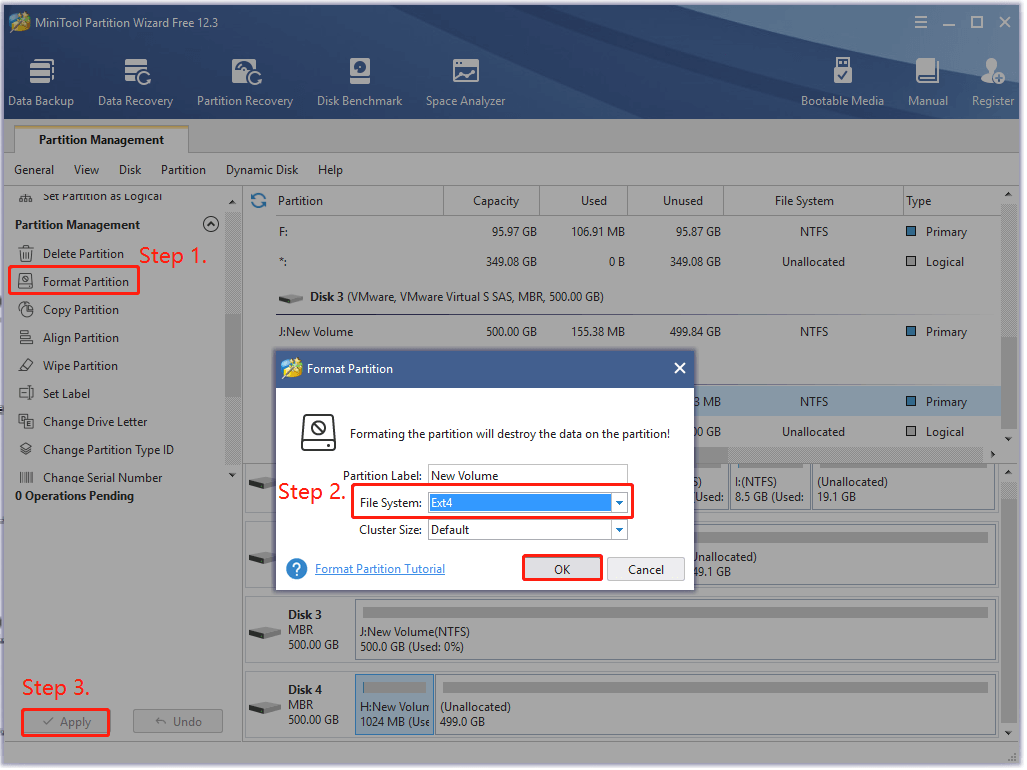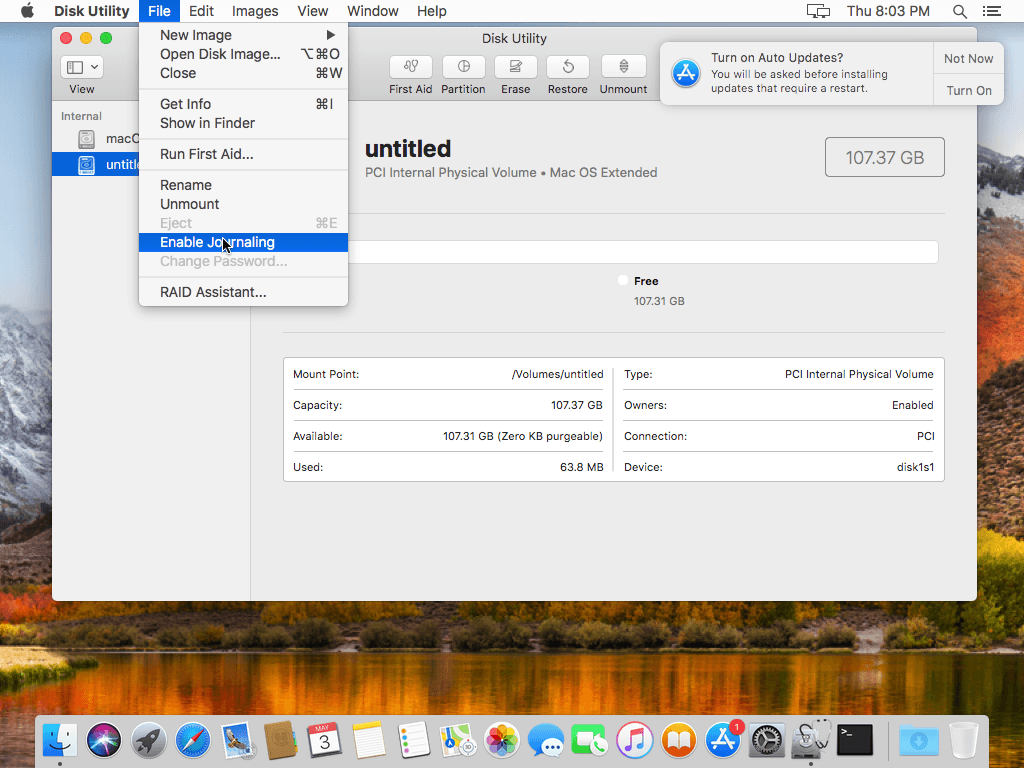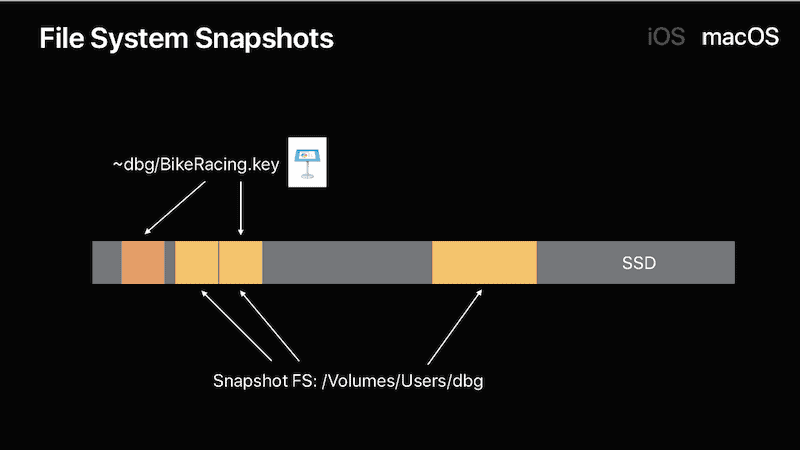

Their purposes are listed in the table below. It can store three types of 4 KB records: Inline Data Attribute records, Fork Data Attribute records and ExtensionĪttribute records.
#Mac format ntfs hfs mac os#
The default sizes for this file are 1 KB in Mac OS and 4 KB in Mac OS X.Īttributes File is a B-tree only found in HFS+. Bad blocks are also recorded as extents here. Each file in the Catalog File record can record up to eight extents for each fork of a file additional extents are recorded in the Extents Overflow File. Fields in HFS+ also vary depending on the data they store, unlike HFS where the fields are fixed.Įxtents Overflow File is a B-tree that records the allocation blocks that are allocated to each file as extents. This is seen in the size of the HFS+ Catalog File being 4 KB in Mac OS and 8 KB in Mac OS X, as opposed to the HFS Catalog File, being only 512 bytes in size. Their main difference is that records with HFS+ are larger to allow more fields and allow these fields to be larger. It can also change in size and does not have to be stored contiguously within a volume.Ĭatalog File is a B-tree containing records for all the files and directories stored in the volume, comparable to the HFS Catalog file. The Allocation File differs from the HFS Volume Bitmap by being stored as a regular file, not occupying a special reserved space at the beginning of the volume. A zero bit means the block is free, while a one bit indicates towards a block in use. Like in the Volume Bitmap in HFS, each allocation block is represented by one bit.
#Mac format ntfs hfs free#
It is always found in the same place.Īllocation File keeps track of which bocks are free and which blocks are in use. It stores data about the volume, including the size of allocation blocks, timestamps and the locations of other volume structures such as the Catalog File or Extent Overflow File. Volume Header is found in sector 2 and is the equivalent to the Master Directory Block in an HFS volume. Follow the on-screen instructions when the New Simple Volume Wizard appears.An HFS+ volume consists of 9 main structures:īoot Blocks are found in sectors 0 and 1 and are identical to the boot blocks found in HFS.

The view button is in the upper left side of the Disk Utility window. If you don’t see two entries listed in the sidebar, change the view in disk utility to show both the drive and the volume. MacOS starting version 10.13-Make sure to select the disk and not just the volume.
#Mac format ntfs hfs windows#
A FAT32 partition can reach up to 32GB when formatted on a Windows PC. However, FAT32 is a legacy file system designed for low capacity hard drives and it is not recommended for modern hard drives or operating systems. exFAT is not a journaled file system which means it can be more susceptible to data corruption when errors occur or the drive is not disconnected properly from the computer.įAT32-Compatible with macOS and Windows.


Format Seagate One Touch SSD to HFS+ if you intend to use it with Time Machine. You cannot use an APFS-formatted disk as your Time Machine backup drive.Windows cannot natively read or write to HFS+ (journaled) volumes.ĪPFS (Apple File System)-An Apple file system optimized for solid state drives (SSDs) and flash-based storage systems. This file system remains the best option for external hard drives and is the only format compatible with Time Machine. Mac OS Extended (HFS+)-An Apple file system optimized for macOS 10.12 and earlier. macOS can read NTFS volumes but cannot natively write to them. If you use the drive with only one type of computer, you can optimize file copy performance by formatting the drive in the native file system for your operating system-NTFS for Windows or HFS+ for macOS. Seagate One Touch SSD is preformatted exFAT for compatibility with both Mac and Windows computers.


 0 kommentar(er)
0 kommentar(er)
